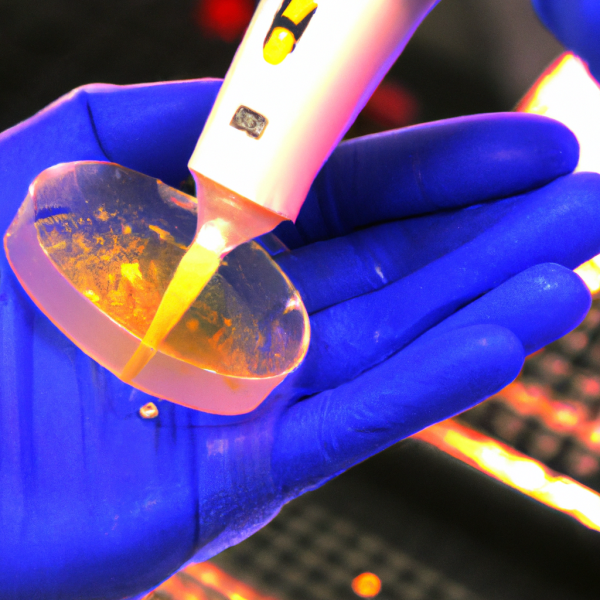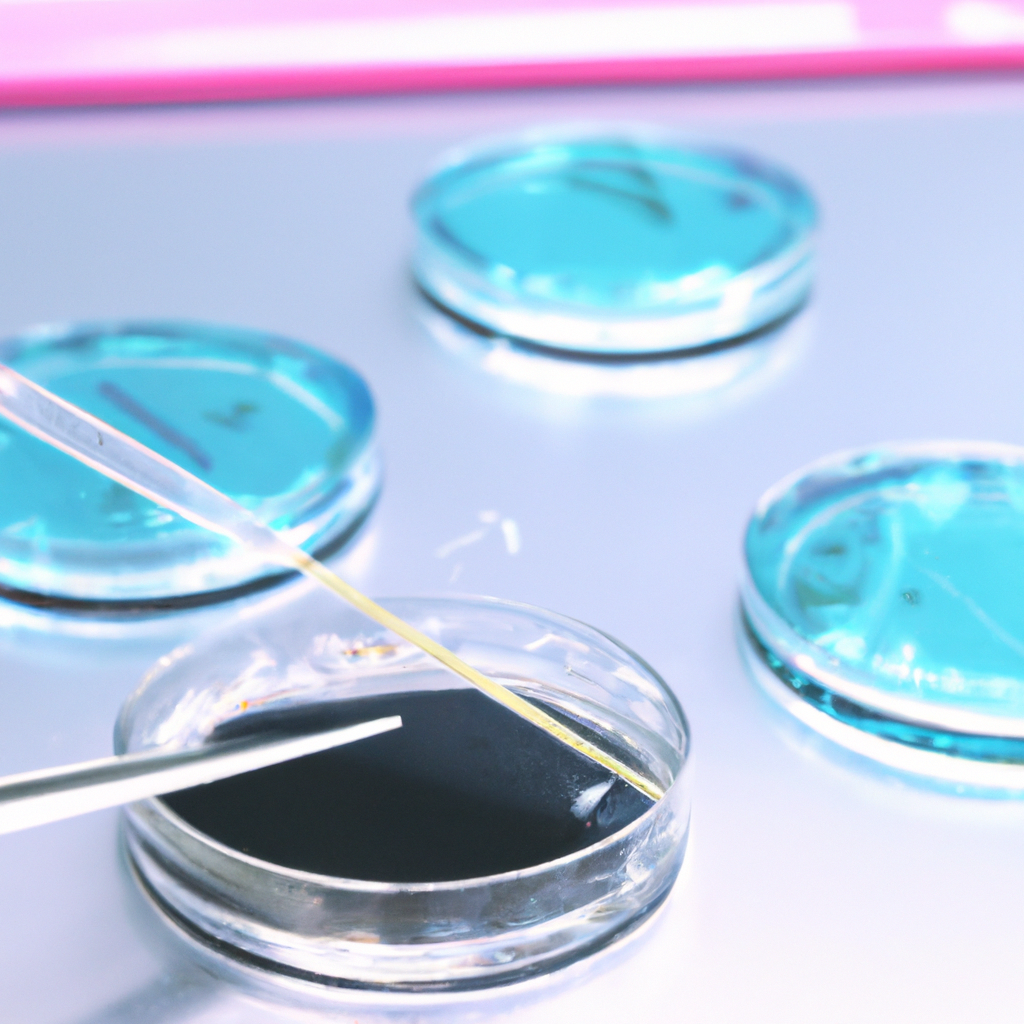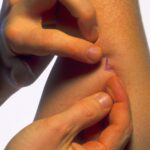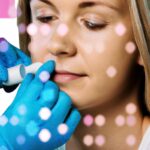The Beauty Benefits of In Vitro Skin Testing
There’s no denying that the use of in vitro skin testing in the cosmetics industry has revolutionized beauty product safety. But what exactly is it, and why is it so important? At its core, in vitro skin testing is a set of laboratory techniques designed to test the safety and effectiveness of cosmetic formulations. In this article, we examine the history, benefits, and best practices for in vitro skin testing for the production of safe, high-quality beauty products.
What is in vitro skin testing?
In vitro skin testing is a set of laboratory techniques that measure the effectiveness of topically applied cosmetics and personal care products. These tests can be used to determine how well a product works and whether or not it is safe to use.
In vitro skin testing involves “growing” or “culturing” human or animal skin cells in a laboratory environment. These cells are then exposed to the cosmetics or skin care products in question. Through a variety of tests and measurements, researchers are able to test the product’s performance, stability, and safety, as well as determine whether it is allergen-free.
The history of in vitro skin testing
In vitro skin testing is a relatively new technique in the beauty industry, but its roots can be traced back to the early 20th century. Researchers initially used it to test irritants and other substances on human skin. From there, the use of in vitro skin testing evolved into what we know today, which is used to study the effectiveness and safety of cosmetics and other topically applied products.
The benefits of in vitro skin testing

In vitro skin testing offers numerous advantages to beauty companies producing high-quality cosmetics and personal care products. For example, in vitro skin testing is less costly and safer than animal testing, and it can help avoid false-positive or false-negative test results. Moreover, in vitro skin testing can help researchers better understand how ingredients interact with each other, allowing them to create more effective and safer products. Finally, in vitro skin testing can also provide information on how products react when exposed to sunlight or heat, which can be a deciding factor when chosing ingredients.
Best practices for in vitro skin testing
When planning and implementing in vitro skin testing, it’s important to follow best practices in order to produce the most accurate results. Here are some tips for the most effective in vitro skin testing process:
1. Have a Plan
Before beginning any in vitro skin testing, it is essential to have a clear and well-defined plan in place. This plan should include the scope and objectives of the tests, the methods to be used, and the timeline for completing the tests.
2. Select Appropriate Test Models
When selecting test models, it’s important to choose models that are accurate representations of the human skin and/or the target population for the cosmetics or skin care products. The cell line and culture conditions should also be carefully chosen for accuracy and consistency.
3. Monitor Results
Monitoring the results of in vitro skin testing is essential for ensuring the safety and efficacy of the product being tested. It’s important to monitor the data from the test and look at the results to determine if the product is safe to use or if further testing or adjustments are necessary.
4. Use Reliable Suppliers
The use of reliable suppliers is essential for producing accurate results. It’s important to use suppliers that can provide quality ingredients and materials that are consistent and uncontaminated.
5. Perform Quality Control
Quality control is critical to producing accurate results. All materials used in the in vitro skin testing process should be checked and validated prior to use in order to ensure accuracy.
FAQs
What are the benefits of in vitro skin testing?
In vitro skin testing offers numerous advantages, including cost savings, safety, and avoiding false-positive or false-negative test results. Additionally, it can help researchers better understand how ingredients interact with each other, allowing them to create more effective and safer products.
What should be included in an in vitro skin testing plan?
A plan for in vitro skin testing should include the scope and objectives of the tests, the methods to be used, and the timeline for completing the tests.
What is the importance of monitoring results?
Monitoring the results of in vitro skin testing is essential for ensuring the safety and efficacy of the product being tested. It’s important to monitor the data from the test and look at the results to determine if the product is safe to use or if further testing or adjustments are necessary.
What should be considered when selecting test models?
When selecting test models, it’s important to choose models that are accurate representations of the human skin and/or the target population for the cosmetics or skin care products. The cell line and culture conditions should also be carefully chosen for accuracy and consistency.
What should be done to ensure reliable results?
Quality control is essential for producing reliable results. This involves checking and validating all materials used in the in vitro skin testing process prior to use in order to ensure accuracy. Additionally, it’s important to use suppliers that can provide quality ingredients and materials that are consistent and uncontaminated.
Conclusion
In vitro skin testing is revolutionizing the way the cosmetics industry evaluates beauty products for safety and effectiveness. This testing method provides numerous benefits, including cost savings, safety, and avoiding false-positive or false-negative test results. When planning and implementing an in vitro skin testing program, it’s important to follow best practices such as having a clear plan in place and selecting appropriate test models. Additionally, quality control measures such as monitoring results and using reliable suppliers should also be taken to ensure reliable and accurate results. Through the careful and strategic use of in vitro skin testing, companies can produce safe and effective beauty products that meet both the expectations of their customers and the regulations of their industry.
Advancing the Field: Recent Innovations in In Vitro Skin Testing
In recent years, there have been significant advancements in the field of in vitro skin testing, further enhancing its benefits and capabilities. These innovations have paved the way for more accurate and comprehensive assessments of cosmetic formulations. Let’s take a closer look at some of the recent breakthroughs and how they are shaping the future of in vitro skin testing.
Microfluidic Systems for Precise Analysis
One of the most notable advancements in in vitro skin testing is the development of microfluidic systems. These systems utilize tiny channels and chambers to mimic the complex structure and function of human skin. By incorporating precise fluid control and continuous monitoring, microfluidic systems allow for real-time analysis of various parameters, including permeability, absorption rates, and tissue viability. This level of detail provides researchers with invaluable insights into the behavior of cosmetic ingredients at a cellular level.
Advanced Tissue Engineering Techniques
Tissue engineering plays a vital role in replicating the characteristics of human skin in the laboratory. Recent breakthroughs in this field have led to the creation of advanced tissue models that closely resemble the structure and functionality of native skin. These models incorporate multiple layers, including the epidermis, dermis, and even subcutaneous adipose tissue. By accurately simulating the skin’s complex architecture, these engineered tissues enable more comprehensive evaluations of product penetration, irritation potential, and interaction with underlying cellular structures.
Integration of Artificial Intelligence
Artificial intelligence (AI) has emerged as a powerful tool in many scientific disciplines, including in vitro skin testing. AI algorithms can analyze large volumes of data generated from testing experiments and identify patterns, correlations, and predictive insights. By leveraging AI, researchers can optimize experimental designs, streamline data interpretation, and uncover subtle relationships between formulation components and skin responses. This integration of AI in in vitro skin testing not only enhances efficiency but also drives innovation by facilitating the discovery of novel product formulations and personalized skincare approaches.
Understanding the Microbiome’s Influence
The human skin microbiome, consisting of diverse microbial communities, has gained significant attention in recent years. Research has revealed that these microorganisms play a crucial role in maintaining skin health and influencing its response to cosmetic products. To capture the intricate interplay between the skin microbiome and cosmetic formulations, advanced in vitro skin testing now incorporates microbiome models. These models allow for the assessment of product effects on microbial diversity, balance, and overall skin homeostasis. By considering the microbiome’s influence, companies can develop products that promote a healthy skin ecosystem.
Key Takeaways:
– Microfluidic systems enable real-time analysis and precise control in in vitro skin testing.
– Advanced tissue engineering techniques replicate the complex structure of human skin for comprehensive evaluations.
– Integration of artificial intelligence optimizes experimental design and data interpretation.
– Understanding the influence of the skin microbiome drives the development of products that support skin health.
Incorporating these recent innovations into your organization’s in vitro skin testing practices can significantly enhance the accuracy, efficiency, and value of your evaluations. By staying at the forefront of technological advancements and best practices, you can ensure that your beauty products meet the highest standards of safety and efficacy, while also meeting the evolving needs and expectations of consumers.






